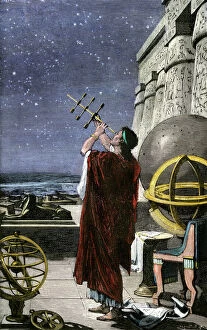"PSCI2A-00073: A Glimpse into the World of Surveying Instruments" Step back in time and explore the fascinating world of surveying instruments with these captivating hints. Delve into history as we uncover remarkable devices that have shaped the field of surveying. Dating back to 1937, Archie Thompson's Surveyors Compass stands as a testament to precision and accuracy. This instrument, meticulously crafted, aided countless surveyors in their quest for precise measurements. Travel further down memory lane to 1854, where an unknown creator brought forth a Surveyor's portrait. Through this artwork, we catch a glimpse of the dedication and expertise required by those who ventured into uncharted territories. Witness Commander Selfridge's triumphant return from an expedition through F. Debenham's masterpiece from 1911. The artist Herbert Ponting immortalizes this momentous occasion when explorers conquered new frontiers using their trusty surveying instruments. Marvel at Lieutenant E. R. G. R Evans skillfully utilizing the four-inch Theodolite during his Antarctic exploration in October 1911. Herbert Ponting captures Lieutenant Evans' determination as he surveys amidst icy landscapes, showcasing the vital role played by these instruments even in extreme conditions. Venture even further back to Sir Christopher Wren's era in 1711; Sir Godfrey Kneller immortalizes him with his signature style. Wren’s genius architectural designs were made possible through meticulous surveys conducted with advanced tools available at that time. Discover Crugers azimuth quadrant from 1673 - a true work of art created by A Steck - which revolutionized angle measurement techniques during its time. This instrument paved the way for accurate mapping and navigation across vast terrains. The five-inch Theodolite from 1866 takes us closer to modern times while still embracing traditional craftsmanship. Witness how advancements in technology allowed for more precise measurements and improved efficiency within surveying practices.















